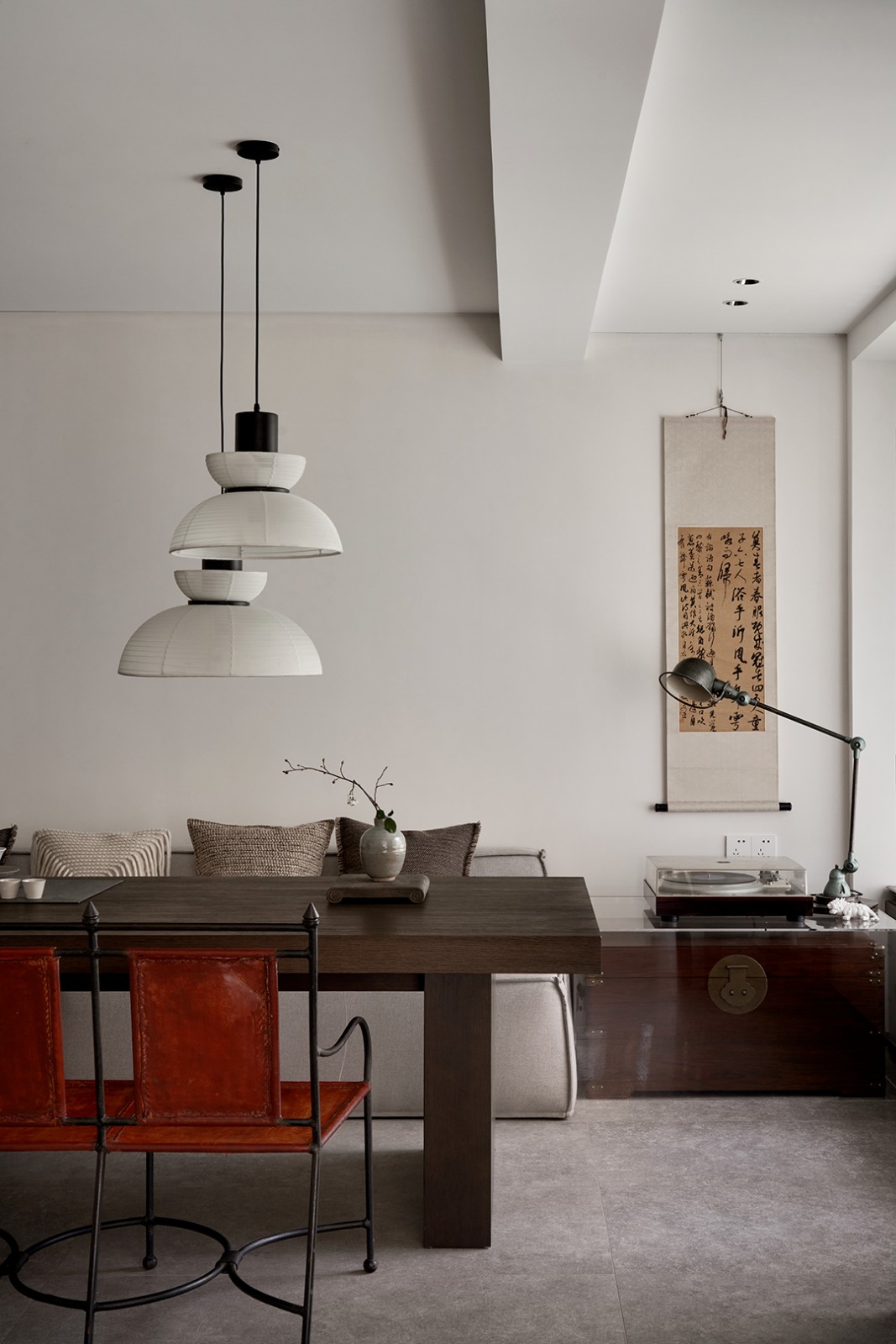Indiana University Health Cannon Design
2013-03-20 01:00
采购产品设计校长Randolph,E.Guillot,AIA,LEED AP,Canon设计承包商F.A.Wilhelm建筑客户印第安纳大学健康制造商装货.多规格少规格
Design Principal Randolph, E. Guillot, AIA, LEED AP, Cannon Design Contractor F.A. Wilhelm Construction Client Indiana University Health Manufacturers Loading... More Specs Less Specs
(C)詹姆斯·斯坦坎普(James Steinkamp)
印地安那大学健康神经科学中心认识到有必要将其神经服务整合为一个单一的设施,它将长期合作伙伴印第安纳大学健康和印第安纳大学医学院的神经科学资源结合在一起,形成了一种综合办法,以最全面、最协调的方式提供神经病人护理服务。该中心提供了更容易、更快地接触到最好的神经科学专家的机会,这是最新的临床突破。最先进的神经疾病治疗方案-从阿尔茨海默病、脑肿瘤到脊柱问题、癫痫和中风。
Recognizing the need to consolidate its neurological services into a single facility, the Indiana University Health Neuroscience Center of Excellence combines the neuroscience resources of longtime partners Indiana University Health and Indiana University School of Medicine, resulting in an integrated approach for the most comprehensive and well-coordinated delivery of neurological patient care. The Center provides easier, faster access to the best neuroscience experts, the latest in clinical breakthroughs, and the most advanced treatment options for neurological disorders—from Alzheimer’s disease and brain tumors to spine problems, seizures and stroke.
(C)詹姆斯·斯坦坎普(James Steinkamp)
为了将尖端的神经科学研究转化为最好的、最先进的病人护理,印第安纳大学健康神经科学中心的六层,27万SF,神经科学卓越中心从中心北侧的人类大脑的两院制组织中获得了灵感,中心的北侧容纳了更“理性”的临床和支持功能;南侧,病人护理的“情感”功能越多;而在西边,合作的功能对翻译研究是如此的重要。随着时间的推移,该设计创造了一个由建筑组成的社区,包括医疗保健、停车、研究和花园。它的六层开放中庭和横扫屋顶是印第安纳波利斯市中心建筑群中的三栋建筑之一,这些建筑无缝地融入了一个不断增长的健康和研究校园。
Designed to translate cutting-edge neuroscience research into the best, most advanced patient care, the six-level, 270,000 sf Indiana University Health, Neuroscience Center of Excellence takes inspiration from the bicameral organization of the human brain with the north side of the Center housing the more “rational” clinical and support functions; the south side, the more “emotional” functions of patient care; and the west side, the collaborative functions so vital to translational research. Creating a community of buildings over time, the design consists of healthcare, parking, research and gardens. Its six-level open atrium and sweeping roofline is one of three buildings in the downtown Indianapolis complex that seamlessly fits into a growing health and research campus.
(C)詹姆斯·斯坦坎普(James Steinkamp)
北面的立面弯成了脑电图,上面装饰着建筑的鳍,在附近的高速公路上播放着引人注目的画面,同时也提供了隐私。西面展示了一种受神经元形状启发的雕塑形式。内饰还包含了来自神经科学研究的几何图形、颜色和图像,包括模仿细胞形态的图案,以及由PET和fMRI脑部扫描的振动激发的颜色块。彩色窗户布置在一个视觉吸引人的图案在底层,创造一个诱人的行人层的存在。
Bent to resemble electroencephalograms, the north façade is adorned with architectural fins, broadcasting a striking presence to a nearby highway while providing privacy. The west façade presents a sculptural form inspired by the shape of neurons. Interiors also incorporate geometry, color, and imagery from neuroscience research, including patterns mimicking cellular forms, and blocks of color inspired by the vibrancy of PET and fMRI brain scans. Color-tinted windows arranged in a visually engaging pattern at the ground floor, create an inviting pedestrian-level presence.
(C)詹姆斯·斯坦坎普(James Steinkamp)
为了传达开放性和连通性,建筑的很大一部分是玻璃,大楼周边有公共空间和循环空间,中心是检查室和程序室。为了确保平衡的高性能策略,采用了低发射率涂层、玻璃图案和不同方向的外部遮阳相结合的方法。
To convey openness and connectivity, a large portion of the building is glass, with public and circulation spaces on the perimeter of the building with exam and procedure rooms at the center. To ensure a balanced high-performance strategy, a combination of low-emissivity coatings, frit patterns and exterior shading in varying orientations were employed.
(C)詹姆斯·斯坦坎普(James Steinkamp)
除了给病人和工作人员带来真正舒适的物理环境外,该大楼还采用灵活和模块化设计的布局和基础设施,以最大限度地适应快速发展的技术和研究举措。医生和工作人员可以很好地进入自然光线和协作空间。患者。高水平的患者与研究者之间的连接支持和鼓励专业合作,并展示了该机构对病人护理和研究的承诺。在现场连接的900车位结构进一步提高了患者的满意度和舒适度。
In addition to a physical environment that is genuinely comforting to both patients and staff, the building employs a layout and infrastructure that is flexible and modularly designed to maximize adaptability to rapidly evolving technologies and research initiatives. Physicians and staff have outstanding access to natural light, collaborative spaces, and patients. The high level of patient-to-researcher connectivity supports and encourages professional collaboration and showcases the commitment of the institution to patient care and research. The on-site connected 900-car parking structure further contributes to patient satisfaction and comfort.
(C)詹姆斯·斯坦坎普(James Steinkamp)
LEED黄金认证-位于紧邻高速公路的地方,但远离校园,最大限度地提高了建筑物从道路上的能见度,并为人们创造了良好的空间。一个U形的入口庭院充满了本地植物和生物瓦片,用来过滤雨水,以及道路和休息场所。
LEED GOLD CERTIFICATION - Located immediately adjacent to an expressway, but away from the campus, the site maximizes the building’s visibility from roadways and creates well-scaled spaces for people. A U-shaped entry court filled with native plantings and bioswales was created to filter rainwater as well as pathways and places of respite.
可持续的设计策略包括充足的采光-也有助于愈合环境。低温空气分配-使设备和管道变得更小,并在增加可用空间的同时降低风扇速度-创造了一个适应性更强、更节能的环境。
The sustainable design strategy includes abundant daylighting—also contributing to a healing environment. Low-temperature air distribution—enabling smaller equipment and ductwork and reducing fan speed while increasing usable space—creates a more adaptable and energy efficient environment.
此外,冷却水分配泵被精心设计,以尽量减少泵的能源消耗.降低照明功率密度是一个关键的重点,从建筑内部到停车场-该停车场的耗电量比相同大小和类型的典型车库少66%。这些措施和其他措施降低了能源成本低于ASHRAE基线20.85%,并帮助实现其LEED黄金认证。
In addition, chilled-water distribution pumps were carefully sized to minimize pump energy consumption. Reducing lighting power density was a key focus from the building interior to the parking garage—which uses 66% less electricity than a typical garage of the same size and type. These measures and others reduced energy cost 20.85% below ASHRAE baseline and helped achieve its LEED Gold certification.
Location 355 West 16th Street, Indianapolis, IN 46202, USA
Category Medical Facilities
Photographs Christopher Barrett
 举报
举报
别默默的看了,快登录帮我评论一下吧!:)
注册
登录
更多评论
相关文章
-

描边风设计中,最容易犯的8种问题分析
2018年走过了四分之一,LOGO设计趋势也清晰了LOGO设计
-

描边风设计中,最容易犯的8种问题分析
2018年走过了四分之一,LOGO设计趋势也清晰了LOGO设计
-

描边风设计中,最容易犯的8种问题分析
2018年走过了四分之一,LOGO设计趋势也清晰了LOGO设计


































































